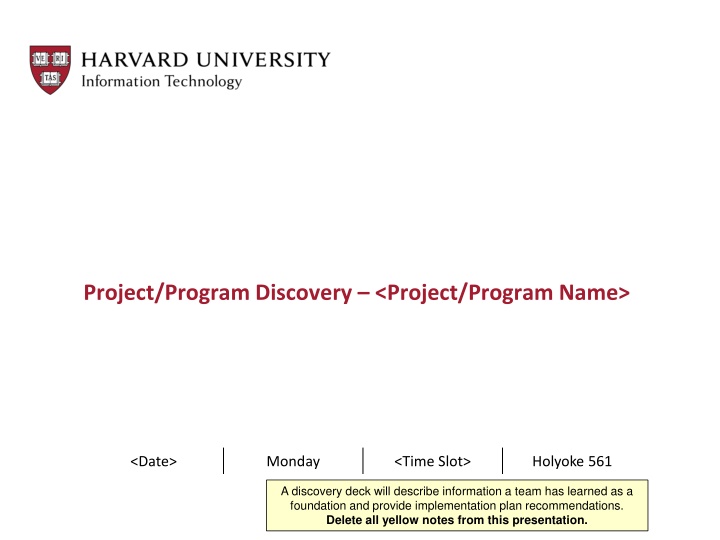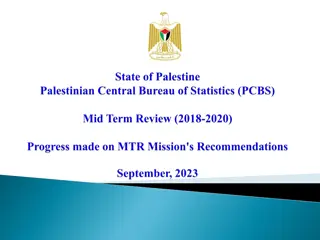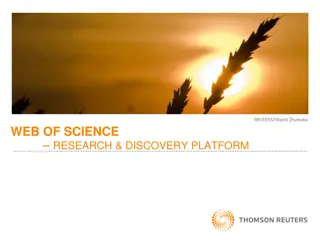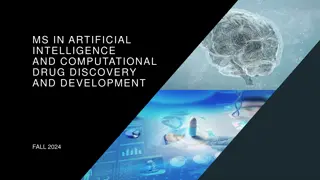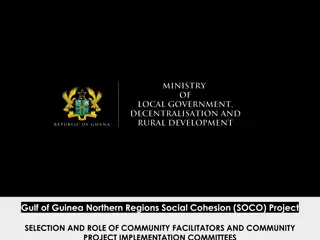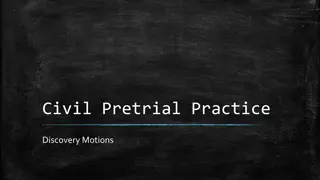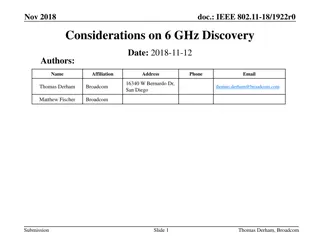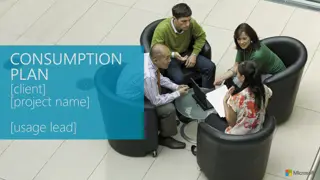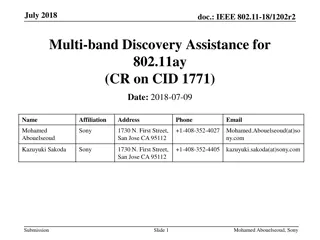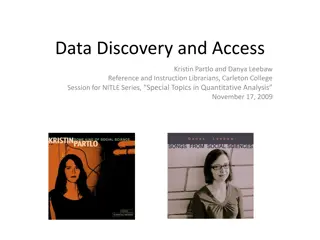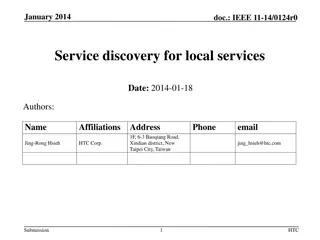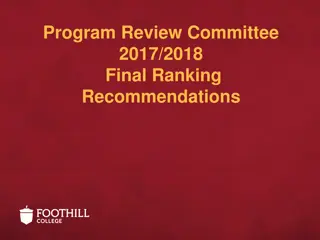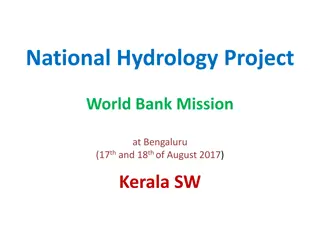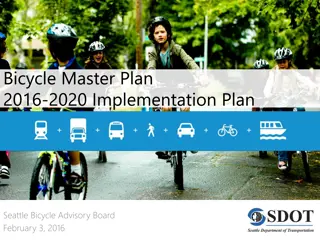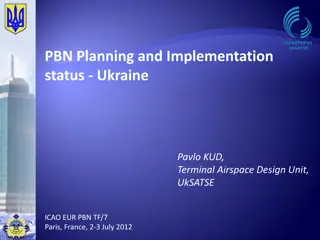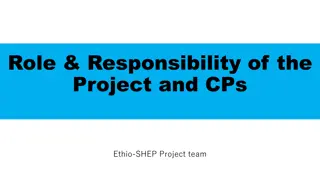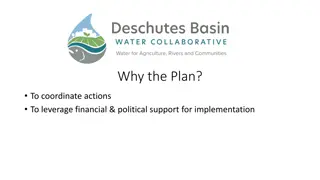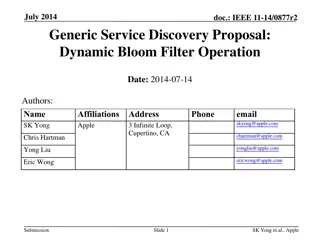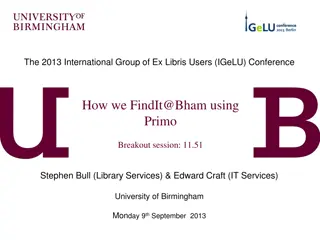Project/Program Discovery - Holyoke 561A - Implementation Plan Recommendations
This presentation aims to describe the information discovered by the team as a foundation and provide implementation plan recommendations. It covers the purpose, intended outcome, problem/opportunity statement, project/program vision, and scope of the project. The content emphasizes creating a shared understanding of the opportunity, deciding on investments, and outlining the impact on existing and new components of the project/program.
Download Presentation

Please find below an Image/Link to download the presentation.
The content on the website is provided AS IS for your information and personal use only. It may not be sold, licensed, or shared on other websites without obtaining consent from the author.If you encounter any issues during the download, it is possible that the publisher has removed the file from their server.
You are allowed to download the files provided on this website for personal or commercial use, subject to the condition that they are used lawfully. All files are the property of their respective owners.
The content on the website is provided AS IS for your information and personal use only. It may not be sold, licensed, or shared on other websites without obtaining consent from the author.
E N D
Presentation Transcript
Project/Program Discovery <Project/Program Name> <Date> Monday <Time Slot> Holyoke 561 A discovery deck will describe information a team has learned as a foundation and provide implementation plan recommendations. Delete all yellow notes from this presentation.
Purpose and Intended Outcome Purpose To present the high-level goals, scope, plan and vision as created during the Discovery phase for Project/Program: X Intended Outcome To create a shared understanding of the potential opportunity and proposed approach; and To decide whether we should invest in a full scoping, budgeting and planning process for this project/program This presentation assumes the project/program team has put significant thought into objectives, goals, KPIs, staffing and implementation framework 2
Problem / Opportunity Statement A problem statement should be concise, written in laymen s terms and can include the following: A brief description of the problem and the metric used to describe the problem Where the problem is occurring by process name and location Who is affected by the problem (number of people, names of departments, schools, centers, etc.) The time frame over which the problem has been occurring The size or magnitude of the problem If possible, cost metrics This slide should be concise. Think Elevator Pitch when considering content length 3
Project/Program Vision Slide should be updated with project/program vision slide
This slide should not be overcomplicated. Each response should be limited to a sentence each, maximum. Scope What changes because of this project/program? <Replace this text with: What currently exists that will be updated due to this effort? (Services, Products, Processes, etc.)> <Replace this text with: What will be newly created due to this effort? (Services, Products, Processes, etc.)> What will be new? <Replace this text with: What legacy components will be deprecated due to this effort? (Services, Products, Processes, etc.)> What will go away? Impact What groups and orgs will benefit? <Replace this text with: Who is the intended audience and how will they benefit> Dependencies on other projects/programs? <Replace this text with: What other projects/programs or ongoing efforts will this Project rely upon?> Projects/programs depending on this effort? <Replace this text with: What other projects/programs are relying on functionality provided from this effort?> <Replace this text with: What areas are out of scope for this project/program?> What is out of scope? 5
Before and After Think Telling the Story when considering content Before the Project/Program ( As Is ) Describe current state Services / Tools that exist today Metrics that support Vision After the Project/Program ( To Be ) Future state descriptions of each Before observation Component 1 Before Component 1 After Component 2 Before Component 2 After 6
Core Project/Program Delivery Team Sponsor: Project/Program Manager: Other Leads (Tech, Usability, etc.): Anticipated Delivery Organization (Existing/New): Oversight Group(s): 7
High-level Plan and Workstreams FY 15 Q2 FY 16 Q2 FY 17 Q2 Q1 Q3 Q4 Q1 Q3 Q4 Q1 Q3 Q4 Workstream 1 Workstream 2 Workstream 3 This is slide is not meant to convey the detail of a project/program plan. As such it should not be crowded but only provide a high level overview and should not be a crowded slide It should be a top down visual to provide high-level timing for executive leadership. 8
All planning milestones should be documented Future phase milestones (Implementation, Transition, etc.) optional Milestones Milestone Target Date Notes Plan Complete (If Large or Very Large Effort) Anticipated completion date of planning effort A detailed plan and budget should further elaborate the high-level plan documented previously Detailed work stream plan and budget (If Large or Very Large Effort) . Key Next Steps Indicate activities that the team will be taking next to meet the milestones listed above 9
Risk of Deferral What if any impact would there be on the University if the start of this project was delayed or deferred? Project deferral risk refers to the risks associated with failing to do a project Project deferral risk can also occur if there is only a limited window of opportunity for conducting a project if the project is not conducted now, there may be a risk that it might never be possible to effectively do it later. 10
Questions and Answers? Does this approach, objectives and next steps align with the expectations of the governing body? Do the milestones and next steps meet expectations? Other Questions? Every Discovery overview should leave time for Q&A from the audience to , at a minimum, ask the governing board to validate the approach and provide guidance and input 11
If necessary add additional slides beyond this point to support the update and to assist with pre- reading. If unnecessary, please delete this and next slide. Supporting Materials 12
